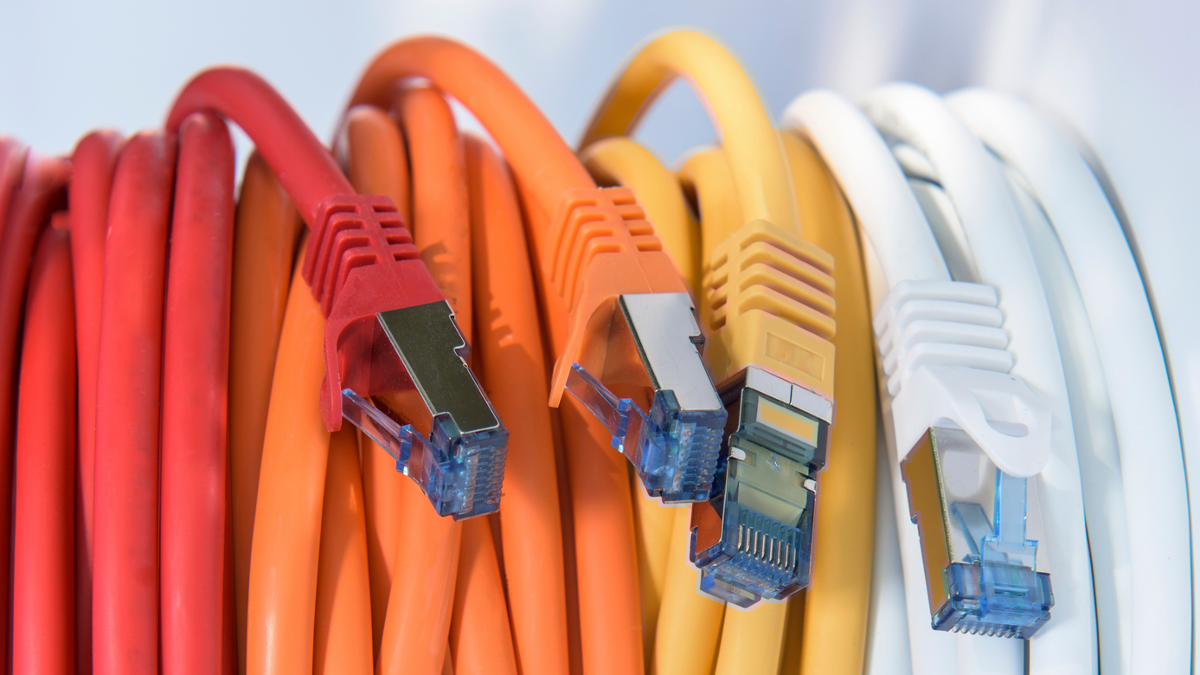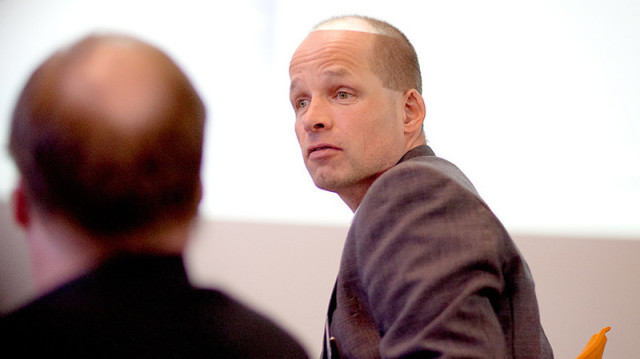We've known the National Broadband Network (NBN) plans to be structured around five "tiers" of connectivity based on download and upload speeds offered by NBNco. It appears the company has renamed the plans and taken one of the tiers out. Here's what you need to know.
Here at Lifehacker Australia we've done a quite a few articles about plans that are available over the NBN and how to pick the right one for you if the network is available in your area. Up until late last year, here's how NBNco classified the plans available over its fibre network:
- Tier 1: This speed tier provides your service provider with wholesale access speeds of 12Mbps download and 1 Mbps upload over NBN fibre.
- Tier 2: This speed tier provides your service provider with wholesale access speeds of 25 Mbps download and 5 Mbps upload over NBN fibre.
- Tier 3: This speed tier provides your service provider with wholesale access speeds of 25 Mbps download and 10 Mbps upload over NBN fibre.
- Tier 4: This speed tier provides your service provider with wholesale access speeds of 50 Mbps download and 20 Mbps upload over NBN fibre.
- Tier 5: This speed tier provides your service provider with wholesale access speeds of 100 Mbps download and 40 Mbps upload over NBN fibre.
On a side note, it's important to remember that Tier 5 services aren't available across the network. NBNco operates as a wholesaler of NBN services and there are around 70 registered internet service providers (ISPs) offering plans to consumers.
Now when you visit the NBNco website for an explanation of the plans, you no longer see references to tiered plans. Instead, you're greeted with nbn 12, nbn 25, nbn 50 and nbn 100:
There's no longer references to specific download and upload speeds available for each plan either and it appears one of the old speed tiers is missing.
We approached NBNco about the changes to the speed tiers and this was the company's response:
"Changes to [NBNco's] website reflect the company’s move to better inform Australians that there are speed options available from retail providers on the nbn network. Website changes include more detailed information on nbn wholesale speed tiers available to [retail service providers] to sell to homes and businesses. This is with the aim of allowing them to better discuss their requirements with their preferred retail provider."
So it's just a different marketing tactic for NBNco.
The changes to the naming convention do align with NBNco's multi-technology mix (MTM) approach to the NBN which uses a handful of different technologies to deliver broadband services depending on the location. Depending on the technology that is being used to provide the service, including FTTP, FTTN and fixed wireless, download and upload speeds can vary greatly.
As the NBNco website states: "Remember, your actual speeds are determined by your provider and the plan you choose, and may also vary depending on things like their network capacity, your equipment, time of day and your location."
In short, those who are already using NBN services through their respective ISPs are unlikely to be affected by the speed tier naming changes; the consumer-facing plans are defined by individual ISPs anyway. For those who are looking at taking up NBN services, be sure to clarify with your prospective ISP about what type of technology and download/upload speeds are available in your area.
How do you feel about the changes to the names of the speed tiers? Do you think this makes sense or does it add unnecessary confusion? Let us know in the comments.















![It's Official: Australian Internet Speeds Are Still Terrible [Infographic]](http://web.archive.org./web/20170112092852im_/http://edge.alluremedia.com.au/m/l/2016/07/iStock_72888179_MEDIUM-640x360.jpg)

Comments
Sick of the marketing bullshit, these companies need to be forced to commit to a service they can provide. If they're selling a 100Mbs service, they need to provide that. If they can't provide 100Mbs, they shouldn't be allowed to sell it. This new idea of hiding that information by simply changing the plan names to something else is utter crap. It should be a requirement to list, specifically, what you're buying and what they're delivering.
Bottle of Coke
1.25l $2.00
May contain less at peak times or if you are more than 2km from the supermarket.
I think you will find Cameron that with the swith to FTTN by the Liberals, No ISP can guarantee anything due to the copper used. (distance and quality of copper)
With fibre, Would not matter how far you are, You get what you pay for. (cvc skimping aside)
Will have to disagree on that one.
I have FTTP @ 100Mbps, and because of congestion in iinets backhaul (thanks Netflicks users), I have drop to 1.5Mbps at various times.
1.5% of the speed promised.
I agree that with fiber they should be able to guarantee speed, but unfortunately the NBN has been designed like an ADSL network with massive oversubscription.
They had one shot to get it right, and all they have done is provide a capability through newer technology options, but kept the same characterisitics of a bottlenecked asynchronous ADSL service.
NBN.......FAIL
Little correction - fibre does have a drop off point. With ADSL (and ADSL2), the speed slows the further you are from the exchange. Its a gradual thing, easily understood.
With fibre, you dont get that gradual dropoff, but around the 15 km mark (old UK research, number I remember is 10 miles, so it might be a bit more than 15 km) data falls off a cliff. Think of it like a TV signal. An analog signal gets a gradual increase in snow and static until its not watchable (that be the ADSL equiv) while a digital signal is either there and totally fine, or totally unwatchable.
Simple reality is that there arent going to be any 15 km fibre loops, so its a moot point, but it IS a restriction. Its also why its not straightforward to just run fibre in rural areas - people can be more than 15 kms from the nearest exchange.
Before someone comments, intercontinental pipes use better technology (in both thicker fibre strands and stronger repeaters) which isnt appropriate for urban use, which is why they can push the data thousands of kms without a problem.
Grunt, that depends entirely on which technology you are using.
The fibre to the premises local-networks that make up some of the NBN use GPON, which has a loss budget that allows up to about 20km maximum between the exchange and a premises. NBN's design rules limit this a bit more for safety.
Over 20km, you can't expect GPON to work at all, but up to 20km you can expect 100% line speed to any one subscriber in the tree (bandwidth is shared, but fairly low (good) contention ratios so it shouldn't be a problem - CVC on the other hand...).
For other fibre technologies it depends entirely on the transceiver modules (lasers) used, the number of joints and splits in the cable, etc... You can buy a gigabit transceiver that goes 10km for about $10, whereas one that goes 150km is more like $360. There are much more expensive ones that can go for up to about 800km before dispersion in the glass becomes too much of a problem, and then you need a repeater.
Thanks for the extra info Stephen, much better explained than me. I understand it well enough, just dont know the terminology, thats a siblings department. They lecture and research this stuff as a career, and have been doing so since the late 80's.
All I was really trying to get across though is that the fibre line does have limitations. The expectation that theres no dropoff is false (as in TheOzCynic's comment "With fibre, Would not matter how far you are"), when we're really only using that 20km tier of GPON tech.
Its a totally moot point though, pretty much everyone on FttP will be well within a 5km radius of an exchange so will never get remotely close to that range limit.
That's not true. All ISPs can guarantee a minimum service level, even over copper. It's been done for many, many years already with voice services. They just chose to not provide any guarantees for internet services because they can get away with their vague promises they don't need to deliver on.
Yes, they can. The guaranteed minimum capability for all FTTN is 25/5. If your modem is incapable of syncing at that speed or greater NBNco have to fix it. (obviously if you're on 12/1 you have to be able to sync at 12/1)
No, they can't, because copper degrades over time, and the signal noise drops considerably over distance. So you may be paying for 25/5, but if you are 400m from the exchange, you'll probably only get peak of 15/3. And that doesn't even start to look at things like congestion where their limit is based on the bandwidth they've purchased to your general area, and which is shared between all the users in that area, so if they've skimped out there (like all ISPs do), then during peak usage times your net will slow to a crawl
You clearly didn't read my post @allanon10101 try again:
While some may find themselves with 15/3 as you mention, NBNco still have to fix it because their speed guarantee is 25/5.
I think the streaming use cases for each are misleading customers to buy a more expensive option, possibly even 2 tiers higher than they need.
Netflix, for example, recommends 5Mbps and 25Mbps for HD (720p) and 4K streaming, respectively. Yet NBNco recommends 50Mbps and 100Mbps plans, respectively.
Personally, my ADSL2+ got me just under 20Mbps, and I never had issues even with 4K streaming from Netflix.
Netflix speed is minimum required.
NBN speed is maximum you might get.
Also, are the gaming responsiveness options legit? I had never heard or read that the ping time is less for higher tiers.
Or is their justification that higher bandwidth means less impact on gaming from other devices sharing the same NBN connection? I hope not, because that's definitely misleading.
Sadly it's the 2nd of the two options there: More bandwidth = less interference with ping. There are some ISPs that optomise the network path to minimise ping, but that is a specific plan, and is unrelated to the NBN provided by the wholesaler the ISP purchases bandwidth from. NBNCo are purely wholesale providers, so things like ping time aren't dealt with on their level
Last edited 11/01/17 3:32 pmThey keep removing information from the public. If this keeps up the NBN website will be just a white screen of death by year's end.
I see they're rearranging the deckchairs on the Titanic again...
Just more marketing bullshit by those incompetent morons at the LNP. Thanks Australian voting public. We now have 3rd world internet in a 1st world country, Heck even some 3rd world countries have better internet than us.
We've been near Romania for a while, now we've slipped under Kenya.
The New FTTN plans:
1. Worse than your old ADSL
2. Seemingly faster when you are the only one online.
3. Something you pay three times as much for but only get twice as much speed.
4. A quarter the speed of your neighbours FTTP.
Only if you pick a 12/1 plan. Everyone is guaranteed 25/5 or better.
That would be due to your ISP skimping on bandwidth, find a better ISP.
Hang on, I thought you said it is worse than ADSL in point 1.
Potentially, yes. If you get the short end of the stick and are in the small percentage to be capable of just over 25/5 then you could be 1/4 the speed of your neighbours on FTTP if they pick a 100/40 plan.
Last edited 11/01/17 12:15 pmA few things you need to consider with your responses there:
1 & 3. Whilst the connection itself is not worse, the amount you are getting bent over by the ISP on average definitely is. Guaranteed speeds are not guaranteed, and on FTTN are subject to the condition and length of the copper connection between the node and your house. Additionally, regional congestion (see point 2 below) during peak times will severely impact the vast majority of connections, further reducing your average connection speed. So whilst you are paying more, you are getting proportionately less for what you pay compared to the cost/value of ADSL. Hence, one could argue, a worse plan.
2. All ISPs skimp on the regional bandwidth (bandwidth to a given region, not regional australia). That's how they make a profit. They figure what the average usage for that area will be, factoring in peak and off-peak times, and get that. As a result, during off-peak times, you will get the full speed (allowing for copper fall-off), whereas during peak times, you will experience throttling as the limited bandwidth from the exchange has to be shared by all the ISPs subscribed users connected to it. Some regions just get worse congestion than others due to average usage in that area being higher in peak times and/or lower during off-peak.
4. Again, you base your assumption on the "guaranteed speed" that is not guaranteed and doesn't factor in things like copper drop-off and line deterioration. A fibre line that is less than (roughly) 15km long will experience no noticable dropoff or line degredation due to the nature of the line and its signal. With FTTP, there is effectively no last mile conditions, resulting in what you pay for being what you get (not counting congestion). The maximum estimated distance from a FTTN node to a household is roughly 800m. As you can see from the UK regulatory body study on line dropoff on the last mile, that last 800 meters can make the difference between getting 100mbps and 25mbps from a 100mbps plan: http://linebroker.co.uk/images/diagram-fttc-speed.gif (FTTC = FTTN, FTTN uses VDSL2 tech on the last mile). So yes, potentially 1/4 of the speed if your neighbour gets FTTP and you only get FTTN, even if you both purchase the same package.
Last edited 11/01/17 3:28 pmThese are tiers. Tier three is when you pay $90 for a 50 mbps plan and get 25 mbps when a $30 plan will get you 12 mbps. Because hey its copper we are talking about. Every second article I read with comments from the NBN say something like, "nobody is choosing the higher bandwidth plans". It must be written in their corporate PR bible somewhere - obfuscate the fact we can't offer any decent speeds please at any opportunity please! What I think really is happening, based on my personal anecdotes, people choose lower speeds not because they don't want higher speed, its that they don't want to pay $90 for 25 mbps when they think they are getting 50 mbps!
Moot as my house won't get it until 2019. Probably end up being 2020.
Maybe I should start a cargo cult and build a cardboard NBN cabinet (painted silver) on the nature strip and run a fibre optic cable to it. It might still be faster than ADSL.
Last edited 10/01/17 5:22 pmTelstra will still charge me $89 per month for a cardboard box.
There seems a progression, or recession, in the level of info available to customers.
Last edited 10/01/17 5:38 pmFirst we were told nearly everybody would have "super-fast" broadband by the end of 2016, then it was going to be real-soon-now (the usual tech cop-out), and now they're clamming up and unhelpfully refusing to supply anything but the most generic details.
What's going on? Anything?
Malcom Turnbull's Mess in action.
I'm at a complete loss for words here ! I'm going to go with My Republic when my node becomes RFS on Jan 20th. I assume everyone knows that My Republic completely ignore this bullshit about Tiers and data limits ? It's $60 for whatever max download speed your NBN connection is capable of, and no limit on data. So, why do the dickheads at NBNCo persist in peddling this archaic crap about speed Tiers ?
Join the discussion!
Comment Voting
Up Votes
Down Votes
Only logged in users may vote for comments!
Please log in or register to gain access to this feature.
Get Permalink